This is the second in a series of three blogs relating to absent lateral incisors.
When lateral incisors are missing if active orthodontic treatment is considered , there are essentially two broad treatment options (not listed in order of merit- there are relative indications and contra-indications for each approach , so the approach is determined by a combination of the presenting features of the patient and their personal preference. )
(1) To reopen the space of the missing tooth (lateral incisor) using orthodontics, and to subsequently restore the resulting space with either a bridge or an implant. “Missing lateral incisors Part 2. “The re-opening the space option.”
OR
(2) To close the space of the absent tooth using orthodontics , and to reshape the third tooth (the canine) so that it looks more like a second tooth (lateral incisor) canine substitution. “Missing lateral incisors Part 3. “The closing the space option.”
The re-opening the space option.
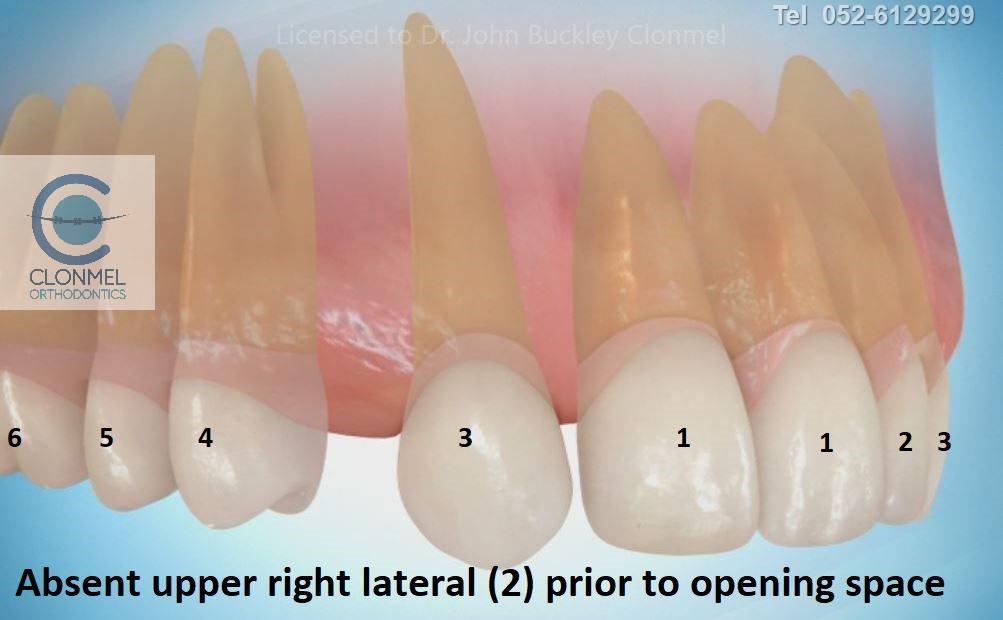
Before opening space.
Space opening is normally performed using fixed appliances as when significant bodily root movement is required this is the most effective way to achieve it, as fixed appliances offer a significant bio-mechanical advantage. Sometimes when more minor (tipping) movements are required clear aligners e.g.” invisalign” “spark” etc can be employed.
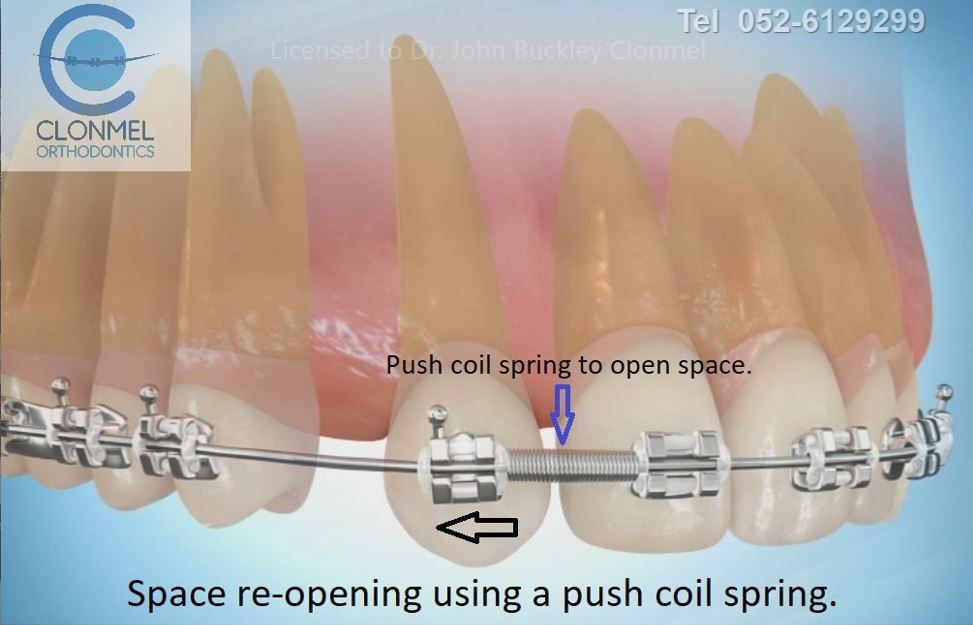
Space re-opening proceding.
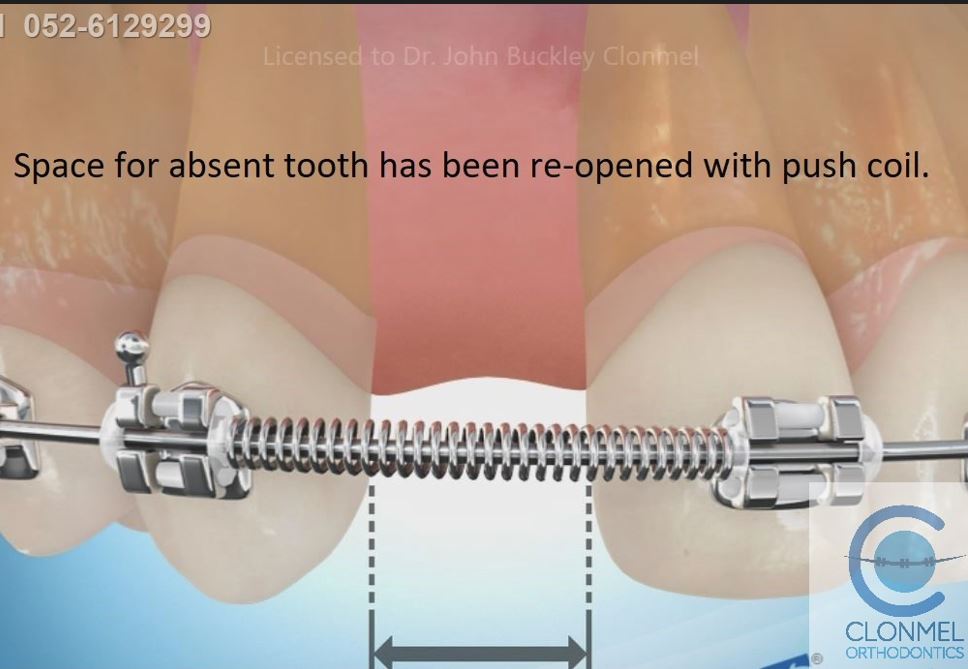
Space re-opening has now been completed.
When space has been re-opened it will need to be restored either with a bridge or an implant.
A bridge is a false tooth which derives its support from an adjacent tooth /teeth. Nowadays minimal or no preparation of the adjacent teeth ( which provide support) is required when a so called “sticky bridge” is employed.
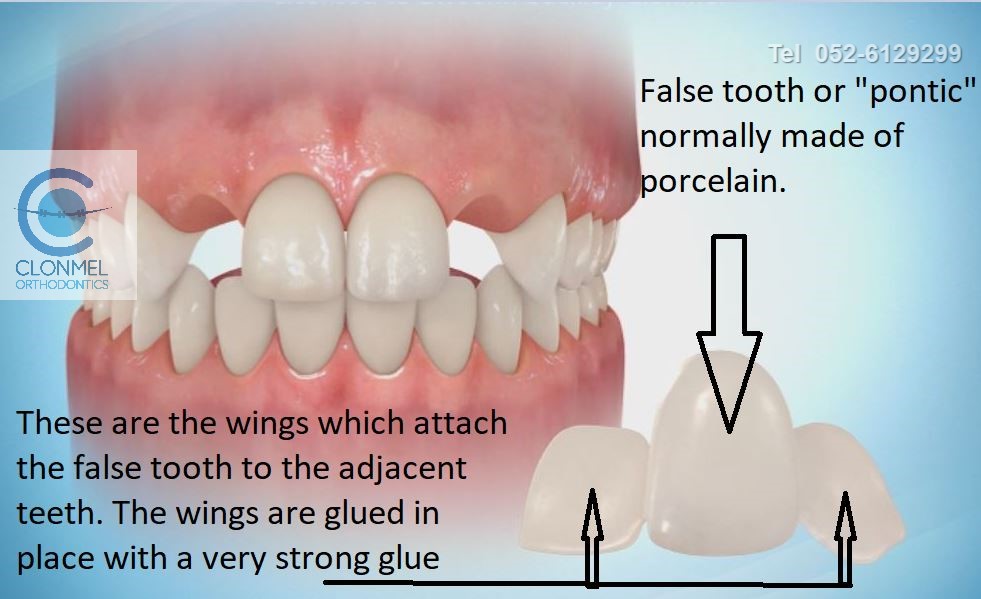
Parts of a bridge, wings and the false tooth or pontic.
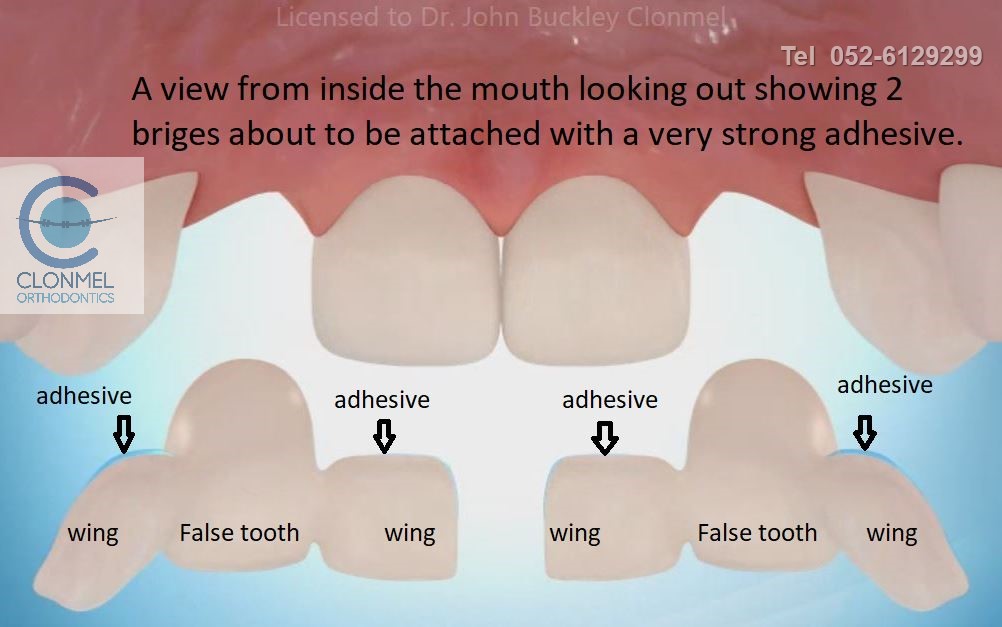 Parts of a bridge, wings and the false tooth or pontic.
Parts of a bridge, wings and the false tooth or pontic.
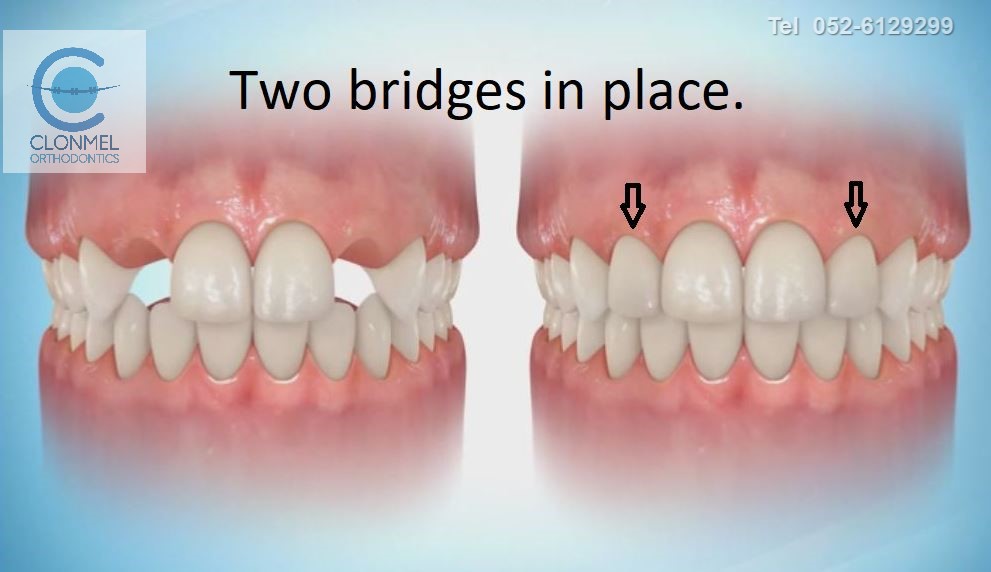
The alternative to a bridge is a dental implant. An implant is a post that is implanted into the jaw bone, a crown is then attached to the implant. The implant does not involve the adjacent teeth.
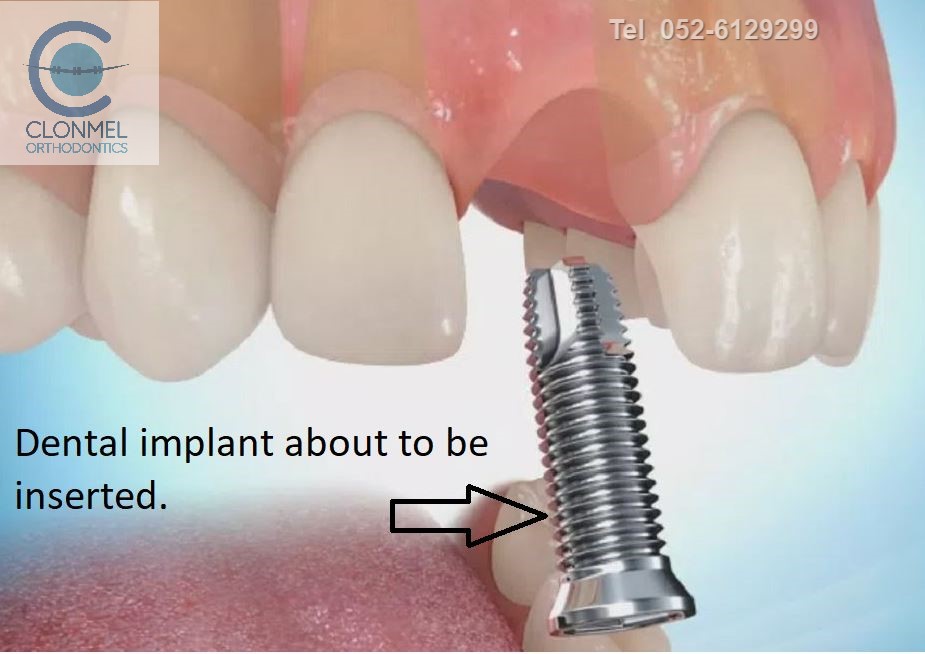
Dental implant prior to insertion into bone (crown not yet attached).
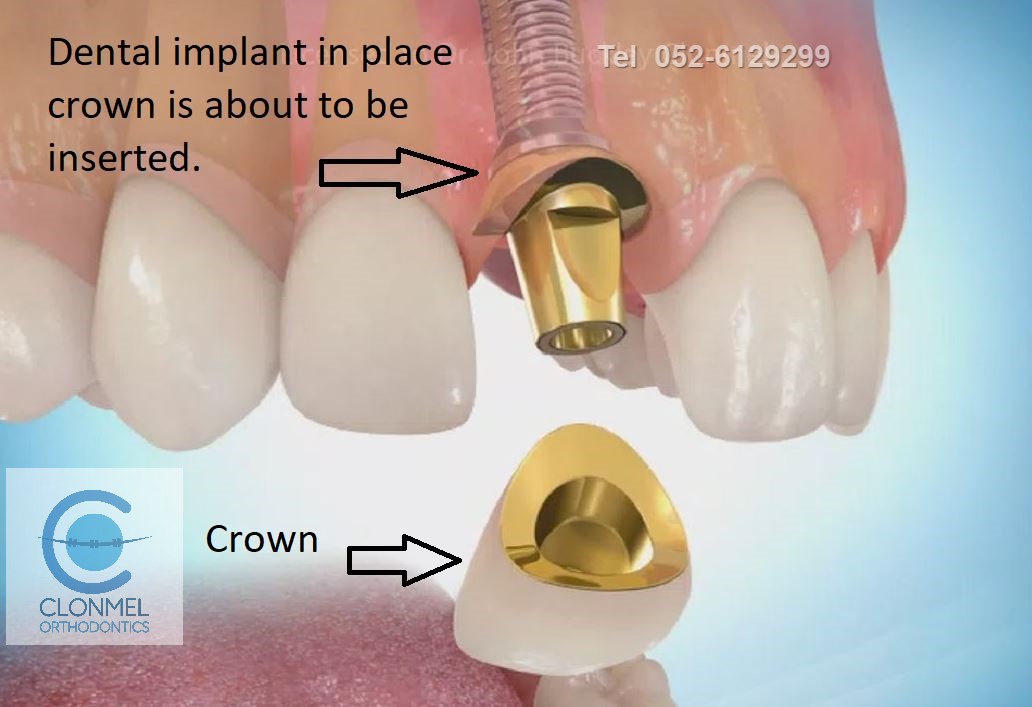
Crown about to be attached to dental implant.
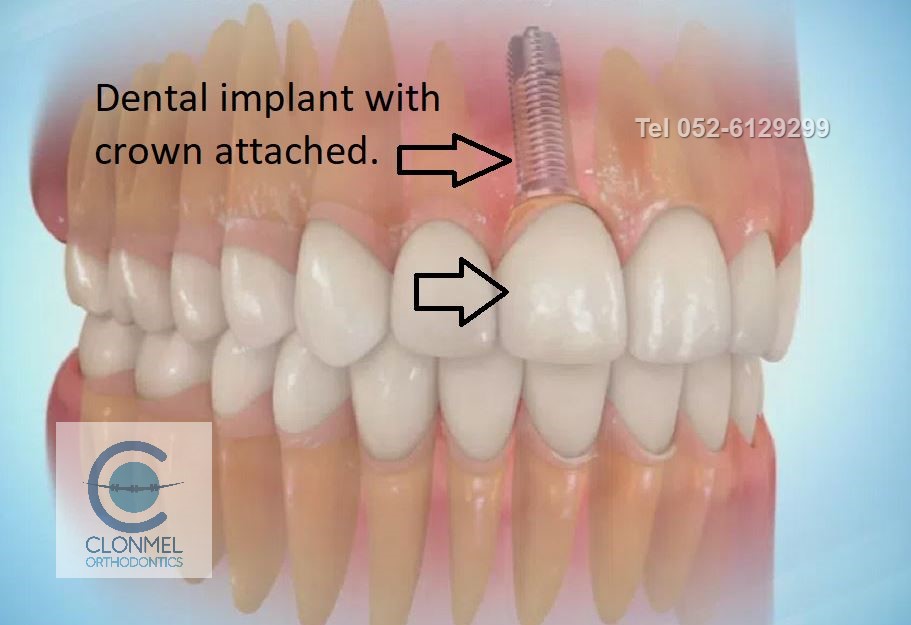
Dental Implant and crown in place.
So in summary if one decides to re-open the space of a missing incisor it can be replaced with either a bridge or an implant. The third and final blog of this series will deal with situations where the third tooth (the canine) is moved into the place of the second tooth this is called canine substitution.
………………………………………………………………………………………………………………………………………………………………………………………..
This orthodontic blog was written by Dr John Buckley, Clonmel’s most qualified and most experienced Orthodontist.
………………………………………………………………………………………………………………………………………………………………………………………….
